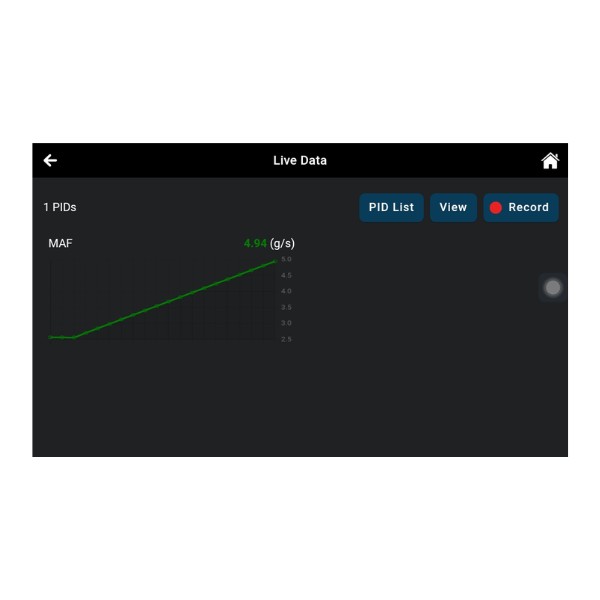A vehicle’s performance and efficiency rely heavily on the Mass Air Flow (MAF) sensor. This sensor measures the amount of air entering the engine, allowing the Engine Control Unit (ECU) to adjust the fuel injection accordingly. Understanding Obd2 Maf Readings is crucial for diagnosing and resolving engine performance issues. This article will guide you through testing and interpreting these readings.
What Does the MAF Sensor Do?
The MAF sensor plays a critical role in maintaining the optimal air-fuel mixture for combustion. It provides real-time data to the ECU, which uses this information to calculate the correct amount of fuel to inject. A faulty or dirty MAF sensor can lead to a variety of performance problems, impacting fuel economy and emissions.
Testing MAF Sensor with an OBD2 Scanner
An OBD2 scanner is an essential tool for diagnosing car problems, including issues with the MAF sensor. Here’s how to use it to test your MAF sensor:
Accessing Live Data
- Plug the OBD2 scanner into your vehicle’s OBD2 port, usually located under the dashboard on the driver’s side.
- Turn the ignition on, but do not start the engine.
- Power on the OBD2 scanner and navigate to the “Live Data” section.
- Locate the parameter labeled “MAF,” which represents the Mass Air Flow sensor readings. This is often expressed in grams per second (g/s).
Interpreting the Readings
- Idle: At idle, a typical MAF sensor reading should fall within the range of 2 to 7 g/s. This value can vary depending on engine size and displacement.
- Acceleration: When you accelerate, the MAF reading should increase significantly, reflecting the higher volume of air entering the engine. At 2500 RPM, expect readings between 15 to 25 g/s, again varying with engine size.
- Consistent RPM: Maintaining a steady RPM should result in a stable MAF reading. Fluctuations or unusually low readings can indicate a problem. For instance, the reading at 2500 RPM should be higher than at idle but lower than at 4000 RPM.
Symptoms of a Faulty MAF Sensor
A malfunctioning MAF sensor can manifest in several ways:
- Check Engine Light: The illumination of the check engine light, often accompanied by diagnostic trouble codes (DTCs) such as P0171 to P0174, can signal a MAF sensor problem.
- Hard Starting: Difficulty starting the engine can be attributed to an inaccurate air-fuel mixture caused by a faulty MAF sensor.
- Rough Idle: A rough or unstable idle can indicate that the engine is not receiving the correct amount of air or fuel, potentially due to a faulty MAF sensor.
- Poor Acceleration: Hesitation or sluggish acceleration can be a direct result of a malfunctioning MAF sensor providing incorrect data to the ECU.
- Reduced Fuel Economy: A faulty MAF sensor can lead to a richer air-fuel mixture, consuming more fuel and decreasing fuel economy.
- Black Exhaust Smoke: Black smoke from the exhaust can be a sign of an excessively rich fuel mixture, often caused by a malfunctioning MAF sensor.
Conclusion
Monitoring obd2 maf reading is a valuable diagnostic technique for assessing engine health and performance. By understanding the expected values and recognizing the symptoms of a faulty MAF sensor, you can effectively troubleshoot engine issues and ensure optimal vehicle operation. Using an OBD2 scanner, you can readily access and interpret these readings, empowering you to address potential problems promptly.

